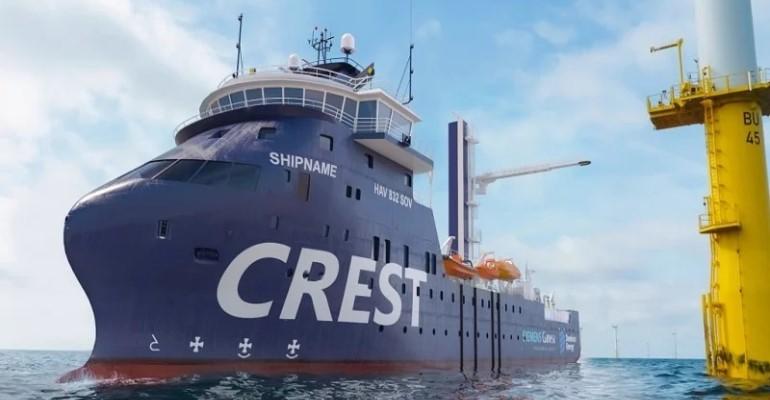A lengthy new report, A Supply Chain Road Map for Offshore Wind Energy in the United States is a collaborative study co-authored by the well-known Business Network for Offshore Wind (BNFOW) and a group of partners including the class society DNV. BNFOW interfaces with owners of vessels serving the US offshore markets. Collaborators include the US department of Energy’s National Renewable Energy Laboratory, the publisher of the report, as well as state-level entities involved in purchases of electric power.
According to the BNFOW, the new publication “…identifies pathways to developing a domestic offshore wind supply chain that can manufacture and deploy the major components needed to set the United States on a pathway to installing 30 gigawatts of offshore wind by 2030 and 110 gigawatts by 2050.”
Such massive deployments requires a supply chain that does not yet exist- with the report authors pointing out that : “…there is a general uncertainty about the scope of such a supply chain, the development time frames needed to build critical resources, the level of investment required, the potential benefits that will be available to local communities and workers, and the significance of gaps in existing manufacturing, port, vessel, or workforce infrastructure on deployment targets.”
“The supply chain scenario includes at least 34 manufacturing facilities for critical components, fabrication ports for most of these facilities, 8 marshaling ports on the East Coast, 2 floating wind integration ports on the West Coast, 4-6 dedicated wind turbine installation vessels (WTIVs), 4-6 dedicated heavy-lift vessels (HLVs), and 4–8 specialized US-flagged feeder barges. These resources will require an investment of at least $22.4bn in the 2020s,” said the report.
Though one US-flagged WTI, to be named Charybdis, is presently under construction at Keppel AmFELS in Brownsville, Texas, present thinking has gravitated towards the use of non-US WTIVs with Jones Act-compliant feeder barges hauling components from the fabrication and marshalling facilities listed above. Indeed, Eneti, (NYSE: “NETI“), a leader in the WTIV sector, pulled back on discussions that it was having with US yards. The Jones Act-compliant newbuild, with a price estimated to be above $500m, will be deployed at the Coastal Virginia Offshore Wind field (CVOW).
While the new report deals with recommended future steps, the first weeks of 2023 saw an actual newbuild order for a new service operation vessel (SOV) that will be deployed along the mid-Atlantic upon delivery, estimated to be in 2026. CREST Wind, a joint venture between Jones Act stalwart Crowley Maritime, and Danish vessel operator Esvagt, has placed the order at Fincantieri’s Bay Shipbuilding in Sturgeon Bay, Wisconsin. The 280-foot vessel will be able to accommodate 80 workers. The SOV will operate under a long term charter with Siemens Gamesa Renewable Energy, developers of the CVOW, where utility Dominion Energy will eventually produce 2.6-gigawatts, with 176 turbines from Siemens Gamesa. CVOW’s pilot project, which became operational in late 2020, consists of two smaller turbines, generating 6-megawatts each.
The read the full report online here: A Supply Chain Road Map for Offshore Wind Energy in the United States
Copyright © 2024. All rights reserved. Seatrade, a trading name of Informa Markets (UK) Limited.
Add Seatrade Maritime News to your Google News feed.  |

